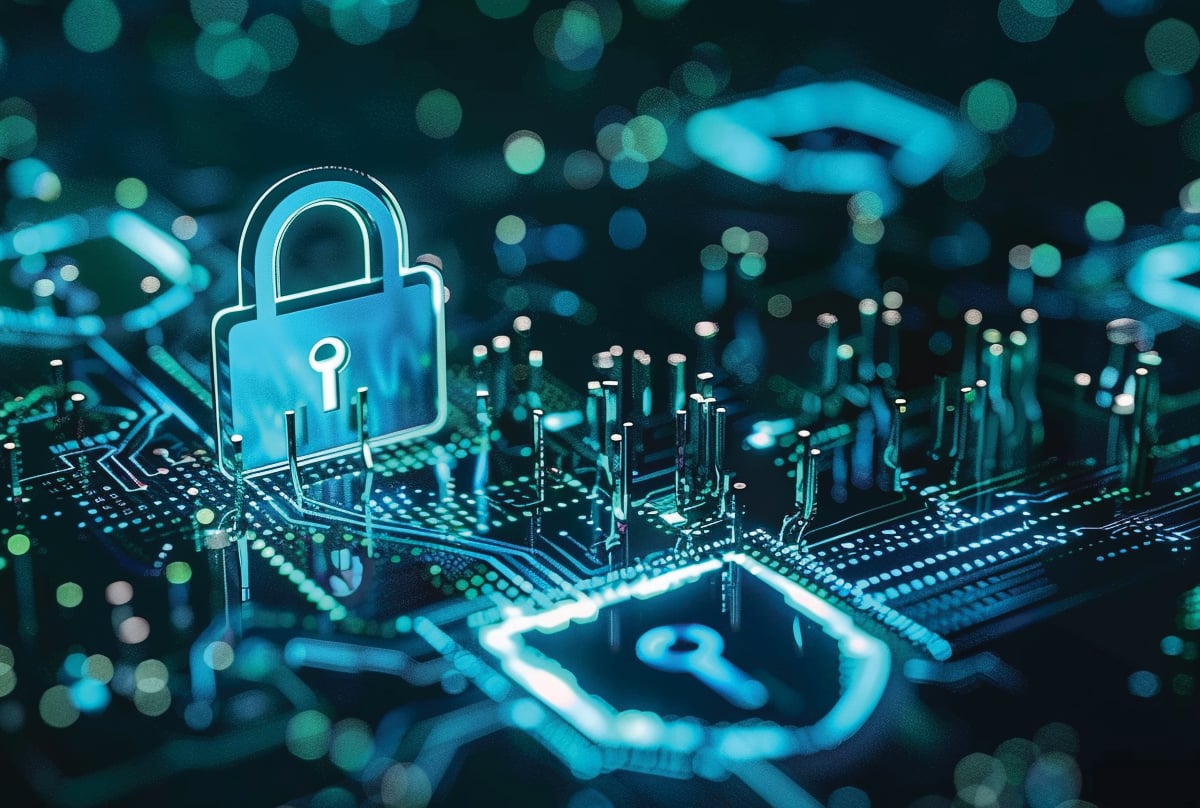Multi-vector attacks is a relevant topic for anyone involved in managing or protecting IT infrastructure, from large enterprises and financial institutions to small business owners and remote workers.

As multi-vector cyber attacks become more sophisticated and prevalent, understanding and implementing advanced cybersecurity strategies is crucial.
University of Houston cybersecurity expert, Jovita Nsoh, warns that the traditional bastion host-based approach to network protection is no longer feasible, because attack surfaces have sprawled and hackers can get around simple defenses.
“My call to action is for cybersecurity professionals to evolve from pattern, recognition-based tools that were developed using what is known as supervised learning, to using more unsupervised learning tools,” he says.
Indeed, wide-scale multi-vector attacks are becoming more prevalent, and they spell disaster for organizations that continue to rely on conventional cyber defenses.
Cybersecurity providers have developed solutions to address these new threats. The attacks are evolving, but so are the defenses. Fending off cyber attacks effectively is usually a matter of finding and deploying the right cybersecurity systems. Multi-vector attacks are complex and difficult to overcome, but they are not unbeatable.
The Rise of Multi-Vector Attacks
Cyber attacks that involve multiple vectors are increasingly threatening organizations as attack surfaces expand with the adoption of new technologies such as multi-cloud and hybrid environments, cloud-native applications, APIs and IoT.
The more complex architectures of modern IT create more opportunities for possible misconfigurations, negligence, and unchecked shadow IT growth. Threat actors are taking advantage of these vulnerabilities, and they are making sure that their attacks penetrate defenses by using multiple vectors.
The main goal of multi-vector attacks is to overwhelm defenses to make them less capable of serving their purpose or misdirect cybersecurity resources.
Attacks can involve supply chain compromises, malware distribution, phishing, remote access trojans, and RDP exploitation, among many others. Attackers can use two or more of these vectors in a concerted campaign.
Sometimes, attacks can use data they obtained from an attack undertaken in a previous attack, like what happened with Cloudflare when it was hacked using authorization tokens stolen from an Okta attack in late 2023.
Establishing Effective Defenses
Organizations need to adopt security solutions that are more suitable for combating multi-vector threats like those that target servers, APIs, email accounts, and endpoint devices simultaneously.
This usually means the use of multiple security solutions like having next-generation firewalls to secure devices, email security, and endpoint detection and response (EDR) software.
There are no cybersecurity products that can effectively deal with all kinds of threats targeting different parts of an organization’s IT infrastructure. Today’s security teams inevitably need to deploy a variety of security controls.
However, organizations can use cybersecurity platforms that consolidate multiple security solutions. They can use a Security Information and Event Management (SIEM) to comprehensively analyze and respond to security-related data.
They can also utilize Security Orchestration, Automation, and Response (SOAR) to bring together disparate internal and external security tools to automate response to security events.
Moreover, it is advisable to embrace modern cybersecurity principles to counteract the more aggressive and sophisticated nature of new cyber attacks.
Organizations can implement Zero Trust Network Access (ZTNA) to avoid anomalous traffic by requiring continuous verification regardless of who makes the access request.
They can also enforce the principle of least privilege, which entails the granting of only the permissions required to complete a specific task. This prevents threat actors from performing actions that are not related to the fulfillment of a particular goal.
Multi-Layered Protection
Multi-vector threats are fittingly addressed by multi-layered protection. Also referred to as Defense-in-Depth (DiD), a multi-layered cybersecurity strategy employs security controls at different levels: physical, technical, and administrative.
At the physical layer, physical controls such as access control systems, security cameras, and physical barriers are deployed to secure devices. For the technical layer, organizations can use firewalls, endpoint security software, encryption, and intrusion detection and prevention systems (IDS/IPS).
Meanwhile, securing the administrative layer entails formulation and strict implementation of security policies, procedures, and protocols that make it difficult for internal and external threat actors to succeed with their attacks.
The DiD strategy aims to prevent attacks, but if they manage to penetrate, the strategy is designed to absorb and progressively weaken the potential for damage.
Multi-layered defense creates redundancy that bolsters cyber resilience. This redundancy may sound inefficient, but it is a must in making sure that IT resources are properly protected. It removes the possibility of single points of failure in an IT environment. If a security control at one layer fails, another defensive mechanism or solution can attempt to stop the attack.
For example, having an IDS/IPS system is not enough to protect sensitive data. It is unlikely for the intrusion detection system to be foolproof. If it fails, the attack leads to data compromise. As such, data encryption should also be implemented.
Even if threat actors manage to access sensitive data, they will still need to decrypt the encrypted data to make sense of it. Different security controls are securing the same data but in different layers and in a redundant fashion to provide maximum security.
Consolidating Security Solutions
With the latest cybersecurity technologies, it is possible to unify multiple disjointed cybersecurity tools to optimize their effectiveness and impact on an organization’s security posture.
It is not necessary to look for a specific cybersecurity platform that offers a comprehensive range of functions to address multi-vector attacks. Multiple disparate security solutions can be pooled together, or new security tools can be added to existing security solutions to keep up with changing security requirements.
To achieve the best outcomes, it is important to choose security solutions that are intuitive and easy to use. As much as possible, the tools have to support integration with each other, although disjointed tools can still be made to work together through platforms like SOAR.
Additionally, it is important for security tools to enable continuous monitoring and incident response. These are usually AI-augmented tools that can undertake behavioral analytics and automatic responses.
Also, it should not be difficult to use them with SIEM to make it easy to manage security data and respond to security incidents efficiently.
Tying Up Loose Ends
It is not enough to have the right security solutions, though. To make sure they deliver optimum protection and afford resilience against multi-vector attacks, it is necessary to provide employee orientation and training for them to understand their role in using these tools.
Even the best tools can be rendered irrelevant if the people who have control over their configurations fall prey to social engineering attacks.
Additionally, organizations should conduct regular security audits to ascertain that the security controls put in place are operating as intended. Penetration testing should also be conducted regularly to identify and plug vulnerabilities and security issues before threat actors find and exploit them.
In summary, multi-vector cyber attacks are becoming more prevalent, and they pose serious risks to organizations that continue to depend on traditional cyber protection.
The good news is that they can be effectively addressed by consolidating various security solutions through a Defense-in-Depth or multi-layered approach and by implementing zero-trust and least-privilege principles.
It is important to provide employee training and conduct regular security audits and penetration testing, though, to make sure that the security solutions are functioning properly.











